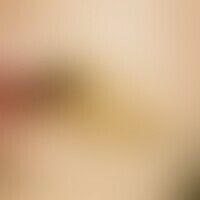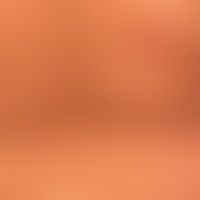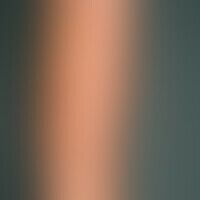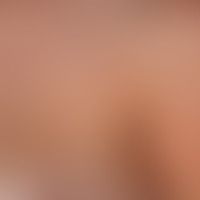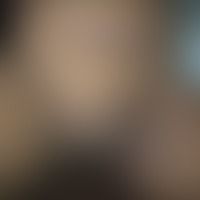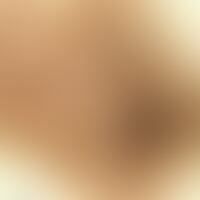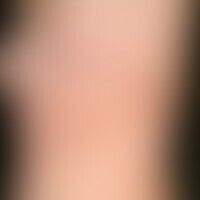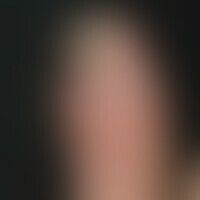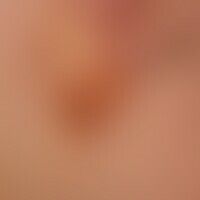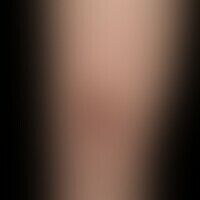Image diagnoses for "brown"
357 results with 1404 images
Results forbrown
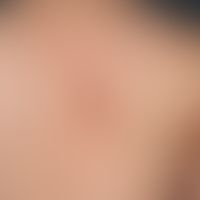
Notalgia paraesthetica G58.8
Notalgia paraesthetica:interval-like itching, also burning, blurredly limited hyperpigmentation, known for several months; the itching is answered by prolonged (lustful) rubbing on the edge of the door.
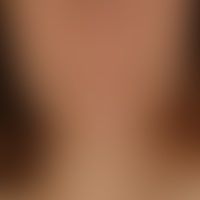
Neurofibromatosis (overview) Q85.0
Type I Neurofibromatosis, peripheral type or classic cutaneous form, numerous smaller and larger soft papules and nodules.
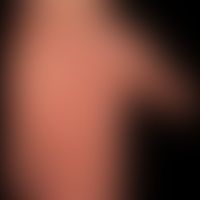
Early syphilis A51.-
Syphilis Early syphilis: psoriasiformes papular palmarsyphilid as partial manifestation of a generalized papular exanthema.
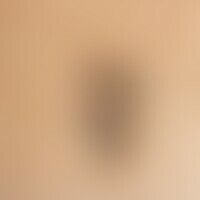
Basal cell carcinoma pigmented C44.L
Basal cell carcinoma, pigmented, sharply defined, irregularly pigmented plaque with individual deep black, smooth shiny papules.
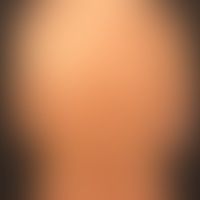
Circumscribed scleroderma L94.0
Circumscribed scleroderma (plaque-type): Survey image of the back: size-progressive, large, brownish, confluent, only slightly indurated spots and plaques on the back in a 58-year-old female patient.
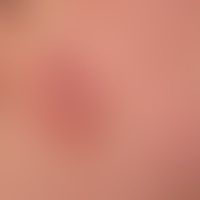
Sarcoidosis of the skin D86.3
Sarcoidosis plaque form: solitary plaque that has existed for about 1 year, has grown continuously up to now, is symptomless, asymptomatic, fine-lamellar scaly, sharply defined, brown-reddish plaque.
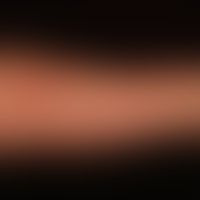
Xanthome eruptive E78.2
Xanthomas, eruptive: disseminated, partly also linearly arranged, 0.1-0.3 cm large, yellow-brown, flat raised, superficially smooth and shiny, firm papules in dense seeding in a 54-year-old patient with known hyperlipoproteinaemia type IV.
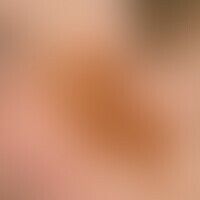
Nevus melanocytic congenital D22.-
Nevus, melanocytic, congenital. since birth existing, well defined, bizarrely configured, sharply limited, light brown (in the cranial part) to strongly brown (in the middle and lower part) spot on the face of an 11-year-old boy.

Lymphedema secondary I89.0, 197.2
Lymphedema secondary: diffuse, uniform swelling of the right lower extremity with papillomatosis cutis lymphostatica. Known CVI. If the patient stands for a longer period of time the swelling increases significantly.
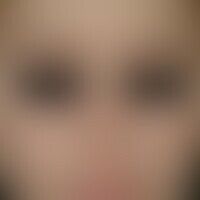
Hydroa vacciniforme L56.8
Hidroa vacciniformia. occurrence of small vesicles in the region of the bridge of the nose in an 8-year-old boy after exposure to sunlight. pinheaded, partially umbilical vesicles with serous content.
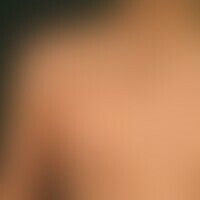
Nevus verrucosus Q82.5
Naevus verrucosus unius lateralis: Multiple, chronically inpatient, since birth existing, in recent years clearly raised, large-area plaques, running along the Blaschko lines and in a linear pattern, localized mainly on the right side of the body, sharply defined, firm, symptomless, grey-brown, rough, wart-like plaques in a 16-year-old adolescent of Mediterranean ethnicity.
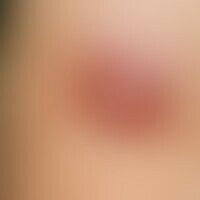
Merkel cell carcinoma C44.L
Merkel cell carcinoma: Red, painless lump that grows quickly in 2 months and has a smooth, reflective surface.
